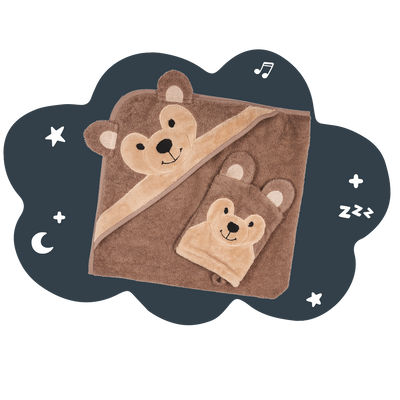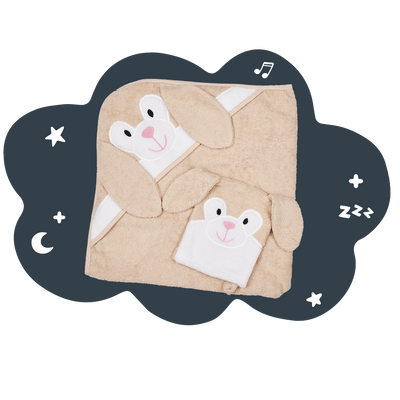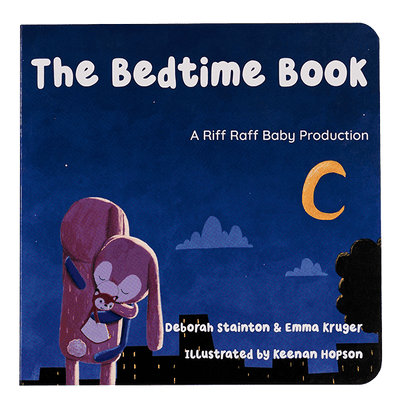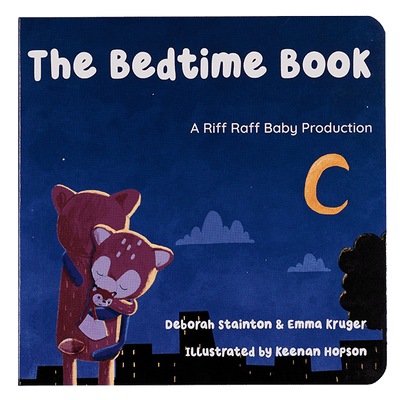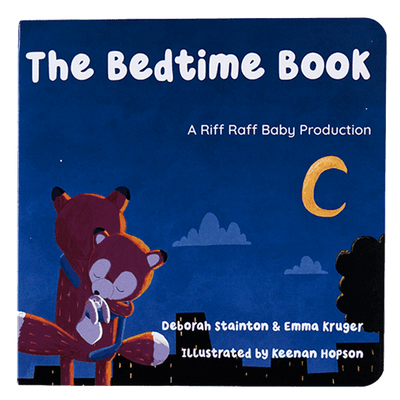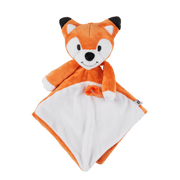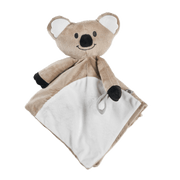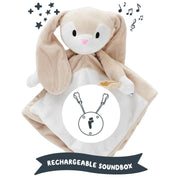
6 Month Old Sleep Schedule
While most babies experience sleep regressions during the 4-month mark, it’s likely that it can happen anytime, and most likely during a 6-month-old sleep schedule. At this stage in your baby’s little world, they’re experiencing changes that to us, would be the equivalent of tectonic plates shifting; to them, they’re learning crazy wild skills like sitting up, grabbing, yanking, babbling – perhaps they’re even teething!
With all these milestones, they need more time to adjust to sleep than they did at four months old, and it’s important to guide them through these difficult transitions with the right sleep toy.
At Riff Raff Sleep Toys, we offer baby products that help babies through periods of adjustment and give them the support they need for better sleep. Whether you’re looking for dummy comforters, baby security blankets, baby hooded towels, baby sleep aids, teething toys, or newborn toys, you will find a sleep toy that will help your baby rest well during their 6-month sleep schedule.
Why does your 6-month-old keep waking up at night?
When your adorable 6-month-old turns fussy and scrappy during irregular waking times at night, it can be for a myriad of reasons:
Teething pain: Even if you can’t catch sight yet of those pearly whites, your baby can be experiencing pain that comes when their teeth are emerging from their gums. To alleviate their pain, introduce a teether like the Riff Raff Silicone Teether. Soft enough for babies to bite down on, this toy’s long arms and legs have textured bumps to soothe and massage sore gums while bubs chomp away safely. They also help develop essential motor skills from an early age with their design that’s perfectly sized for little hands.
Environmental factors: Noticing that your child is awake just as the sunlight creeps into their room at dawn? At the 6-month mark, your child is beginning to respond to nature the same way you do. If their room isn’t completely dark, they may have a hard time interpreting when to sleep. Guide them accordingly by making sure their bedtime is conducive for sleep, and this may also mean buying blackout curtains, so the morning rays don’t wake up your child earlier than you want. You also have to mitigate the many noises that could jolt your baby awake – the white noise sound box of our Riff Raff sleep toys helps mask disturbing noises, so they sleep throughout the night.
Inconsistent sleep schedules: It’s also possible that because of irregular sleeping times, their waking times become as sporadic as well. If your baby is having a hard time adjusting to a sleep schedule, this is where a Riff Raff sleep toy can help ease the disruptions happening in a 6-month-old sleep schedule. A comforter can build positive associations with sleep time, and your baby will have all the support they need in resettling back into healthy sleep habits.
How long should a 6-month-old sleep at night?
Your 6-month-old can sleep for 15 hours a day: that’s 11 hours at night with two or three naps in between during the day. If their current baby sleep patterns are working for you and your family, that’s wonderful – but if you find sleep practices that aren’t sustainable in the long run, then reading about sleep aid products may help.
How to sleep train your 6-month-old?
Kids can’t be on a schedule for their entire life, and the more you pressure them, the more insecure they’ll feel about falling asleep, and with insecurity comes a negative association with bedtime. Try not to put too much stock in a 6-month-old sleep schedule – you want your child’s mood and behaviour to be your primary guide. The key is positive reinforcement so that these bedtime signals can relax them enough for shut-eye to take over.
Keep them active during awake periods
During their awake times, such as feeding, it’s important to keep them engaged so that there are better chances that your little one will hit the hay when the time calls for it. This means avoiding snack feeding so you can focus on getting them sleeping for prolonged periods instead of constantly worrying that they may be waking due to hunger.
Look out for signs of overtiredness
You mustn’t be simply zeroing in on their cycles at night; you should also pay attention to their energy levels during the day. If they seem uninterested in their environment and often have periods of drowsiness, that should be a cause for concern. By 6 months, your baby can communicate their tiredness by simple gestures like yawning or rubbing their eyes. This can help you gauge if they’re getting enough sleep or not.
Have a relaxing bedtime ritual
If there’s anything that babies love, it’s a consistent bedtime routine – and throwing in a bedtime story, and a goodnight song is the cherry on top. Luckily, our Riff Raff sleep toys can sweeten this step even more: the plush toy’s blanket body gives that warm, cosy and cuddly feeling that’s perfect for soothing your little one. Aside from the white noise it plays, you can also trigger a sleepy lullaby just as you end your bedtime story. Do this every night, and getting good habits in place may come faster than you expect. Now that you know the benefits of integrating a baby sleep toy into a 6-month-old sleep schedule, grab one at Riff Raff Sleep Toys online store! Shopping for multiple items is a breeze with our easy-to-navigate site, plus the ordering process is simple. Order now and equip your baby with essential skills that are beneficial for them and the entire family.
Safety Note: It is really important that SIDS safe sleeping guidelines are followed, and no soft toys should be in the crib with your baby under 7 months of age. Our toy has been designed with a strap which should be used to secure the toy to either the inside or the outside of the crib away from little ones' hands. This strap should always be used with babies unless being directly supervised. They will benefit from the audio and visual comfort when not able to feel the comforter.













